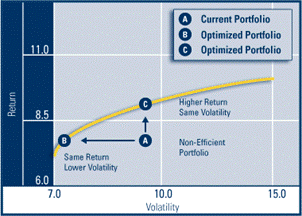 As target date funds have become more prevalent, however, many advisors are beginning to wonder if there might be an opportunity for improvement.
As target date funds have become more prevalent, however, many advisors are beginning to wonder if there might be an opportunity for improvement.
Target date funds were first introduced in the early 1990s and have been growing in popularity ever since. By year-end 2018, according to the Employee Benefit Research Institute (EBRI), target date fund assets represented approximately 27% of total 401(k) assets in their database. The appeal is understandable. Many 401(k) plan participants are not very knowledgeable concerning investment selection, so a cost-effective professionally managed allocation offers an alternative.
Per a 2022 Stable Value Study by Metlife, 89% of plan sponsors and 97% of plan advisors indicated that they would be interested if a target fund provider could offer a solution “that generates net returns four times more than the cost associated with delivering those incremental returns (e.g., 60 basis points enhanced net returns for a cost of 15 basis points) while keeping volatility constant.”
Stable value funds may have the potential to offer this kind of tradeoff under the right circumstances; however, that asset class is generally not found in current off-the-shelf target date funds due to Employee Retirement Income Security Act (ERISA) constraints. This is why many advisors might consider solutions such as pre-set allocation models using a stable value fund already available in the plan’s general lineup or alternatively a set of customized target date collective investment trusts (CITs) with stable value as a key holding.
Academic literature supports this development. In “Stable Value Funds Performance,” Babbel and Herce performed efficient frontier analysis, which is a lynchpin of Modern Portfolio Theory, and made the case that stable value should be a significant component of any efficient frontier where it is an available asset class. Specifically, the authors concluded that stable value tends to dominate both bonds and cash, which are the common diversifying assets currently used by traditional target date funds.
The efficient frontier is defined as the set of optimal portfolios that offers the highest expected return for each level of assumed standard deviation. Portfolios that are constructed to be on the efficient frontier curve are said to be optimal, while portfolios that fall below the efficient frontier are said to be non-efficient or sub-optimal. To construct an efficient frontier, an advisor needs three pieces of data for every potential asset class: expected return, expected standard deviation, and the expected correlation of asset classes versus each other. Overall, the best individual asset class components tend to be those with high returns relative to their standard deviation, while also being less correlated to other asset classes.

Source: http://www.ci.com/advisingtheclient/sbuild/sbuild_11.html
In 2018, Babbel and Herce also concluded that the stable value asset class was “dominant” because it offered enviable returns with low standard deviation. To see if those findings still hold true today, we analyzed the returns and standard deviation for bonds, money market, and stable value for the past 15 years below:
|
|
Annualized Return (1/1/2007 through 12/31/2021) |
Standard Deviation (1/1/2007 through 12/31/2021) |
|
Core Bonds |
3.98% |
3.60% |
|
Money Market |
0.72% |
0.38% |
|
Stable Value |
2.56% |
0.28% |
Source: Morningstar Direct Category Performance, 2022. Core Bonds = US Fund Intermediate Core Bond, Money Market = US Fund Money Market – Taxable, Stable Value = Morningstar US CIT Stable Value GR
At first glance, the results above might appear too good to be true. How are stable value providers able to consistently outperform money market funds with comparable standard deviation? The secret is in the issuers’ skill in underwriting participant behavior. For example, while an individual participant may buy and sell their investment at any time, issuers know that, collectively, a total plan will usually have relatively stable cash flows into the investment overall. As a result, the stable value issuer can then invest in longer-duration, higher-yielding assets, benefiting all participants for whatever amount of time that they individually invest in the fund.
The Investment Company Institute estimates that stable value funds currently make up roughly $900 billion of the overall $7 trillion in defined contribution plan assets. Yet, stable value as an investment does not seem to be fully appreciated by the typical investor. This is likely because use of the asset class is limited to tax-qualified vehicles such as Defined Contribution plans. The inability of Wall Street to sell stable value directly to retail investors is a likely factor for limited national marketing exposure of this asset class.
The Stable Value Fund Industry has been around since the 1970s and has regularly outperformed money market funds since that time. However, it does come with a few constraints. First, a plan is generally required to avoid other competing investments such as money market and short-term bond funds. Second, a plan needs to make a long-term commitment to the asset class, since removing the asset from the plan lineup entirely can require advance notice or potentially trigger a market value adjustment. Both constraints are necessary to provide the issuer with cash flow stability needed for investment in longer duration assets.
It should be noted that there is additional potential issuer risk that is not fully captured by the efficient frontier modeling, however, on the positive side, the Stable Value Fund Industry has already been stress tested by many significant global events—1970s inflation, 1990s tech boom and subsequent crash, the Great Financial Crisis and the recent pandemic—all without major incident thus far. Still, it should be noted that past performance is not an indicator of future results.
Stable value already occupies a significant portion of the overall retirement plan industry assets, approximately 10% of the total defined contribution market,[1] despite limited marketing to the public and nascent use in preset allocations and customized target date collective investment trusts. As more advisors and plan sponsors become aware of these alternatives to traditional target date funds, stable value funds are strongly positioned for consideration in diversified portfolios.
Kent Bartell is the director of investment research at The Standard. He has more than 25 years of experience in portfolio management and financial services. Kent holds Chartered Financial Analyst® and Associate of the Society of Actuaries designations. He graduated from the University of Michigan with a bachelor’s degree in mathematics and a master’s degree in business administration.
Intended for a financial professional audience.
The Standard is the marketing name for StanCorp Financial Group, Inc., and its subsidiaries. StanCorp Equities, Inc., member FINRA, wholesales a group annuity contract issued by Standard Insurance Company and a mutual fund trust platform for retirement plans. Standard Retirement Services, Inc., provides financial recordkeeping and plan administrative services. Investment advisory services are provided by StanCorp Investment Advisers, Inc., a registered investment advisor. StanCorp Equities, Inc., Standard Insurance Company, Standard Retirement Services, Inc., and StanCorp Investment Advisers, Inc., are subsidiaries of StanCorp Financial Group, Inc., and all are Oregon corporations
[1] Stable Value Investment Association (SVIA) SQ2021 Stable Value Quarterly Characteristics Survey.

